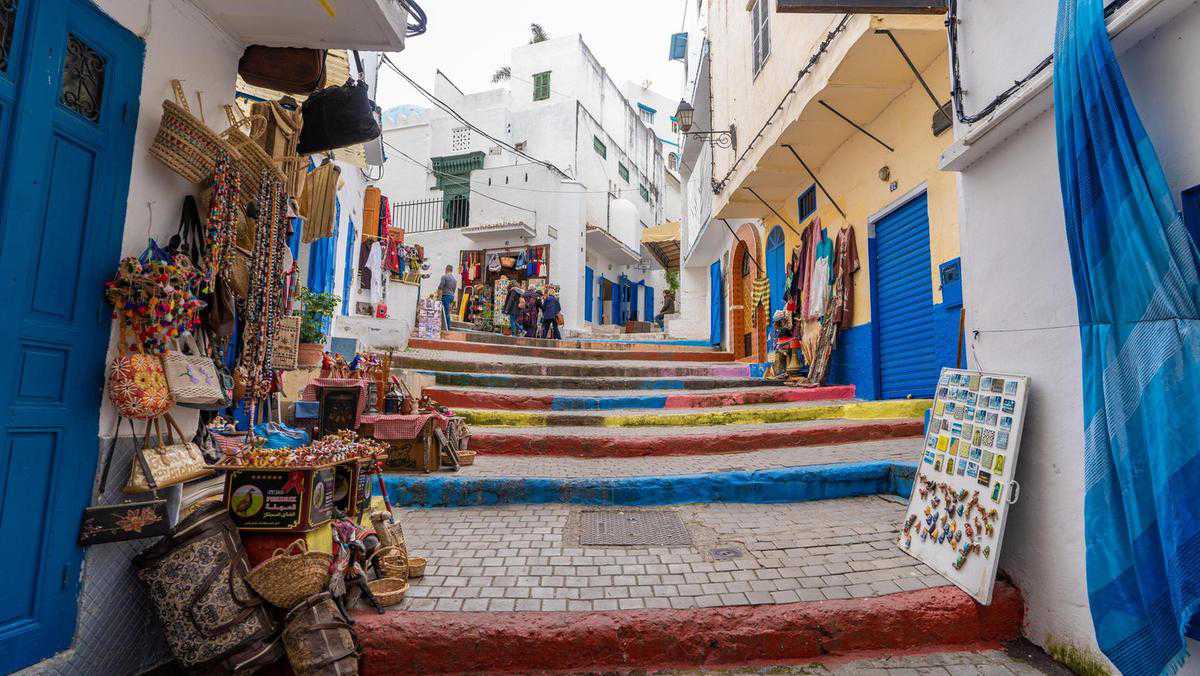How Tangier’s historic centre has inspired generations of artists – and still does
12 October, 2019

It’s a moniker synonymous with my life in Dubai: my building is named after him, as is my neighbourhood mall and now, more than 5,000 kilometres away, is his appellation inscribed on a small, blink-and-you’ll-miss-it plaque.
The man in question is the legendary Ibn Battuta and I have, without foresight or forewarning, stumbled upon the humble, unassuming mausoleum in which he is purported to be buried.
Nestled among the labyrinthine passageways of Tangier’s ancient medina, on the northern coast of Morocco, the final resting place of one of the region’s most famed explorers is more modest than expected for the man who traversed routes as far-flung as Bulgaria to Beijing. The 14th-century explorer is, according to the colourful tile on the wall that declares “tambeau” or tomb, buried behind a white and blue-washed wall that juts out in time-worn stone.
The Muslim Berber Battuta is credited with spending about 30 years of his life on the road, travelling extensively across the Islamic world, including the Middle East, North Africa and Asia. His adventures were captured in Rihla, an account of Battuta’s expeditions that he recounted to scholar Ibn Juzayy. But, despite his wandering ways, the Tangier-born explorer is entombed in the land where he came from.
His grave is just one of the many hidden gems scattered across the city’s historic heart, which fuses breathtaking vistas and an air of mystery within its winding lanes. Though there is plenty to do for Batutta’s modern-day fellow travellers in Tangier, those wanting to immerse themselves in the port hub’s intriguing history should spend an afternoon in its centuries-old kasbah and medina, neighbouring locations that became a hideaway for artists, bohemians and Beat writers.
Indeed, Tangier was, at a time, a beacon for a generation of scribes, with Jack Kerouac, Truman Capote and Tennessee Williams all making creative pilgrimages to Morocco’s now-third largest city in the 1950s and 1960s. The city, which overlooks the Strait of Gibraltar, was where William S Burroughs penned his seminal Naked Lunch, while hedonists of the 1970s, such as Jimi Hendrix and The Rolling Stones, ventured to the city for musical inspiration.
From Cafe de Paris, a Tangier institution rumoured to have been a Beat hangout, to Cafe Baba, where Keith Richards and Mick Jagger famously whiled away hours, the city’s walls enclose myriad landmarks embedded in popular culture, though now they’re frequented by millennials in sportswear rather than rimmed glasses and checked shirts.
“This used to be tax haven, with lots of banks,” our guide explains. “The best generation of novelists used to come here, people who couldn’t write in the US came here.”
Wandering around the kasbah’s maze, encapsulated between its 11 gates, it’s easy to see why Tangier entranced so many recognisable names, including American entrepreneur Malcolm Forbes and designer Yves Saint Laurent. There’s a dilapidation in the crumbling facades and peeling walls, but it only seems to add to the city’s beauty and charisma, while the multi-hued, patterned tiles that decorate doorways add a sense of playfulness and joviality to the mostly white-washed buildings. It’s at once a tranquil oasis yet, as you turn a corner, a seething district, with crowds of boys kicking around a football and playing a spirited game of cops and robbers.
And the city continues to inspire today’s creatives, primarily filmmakers, providing a backdrop to two James Bond films (2015’s Spectre and 1987’s The Living Daylights), as well as Christopher Nolan’s Inception from 2010 and a high-speed pursuit in 2007’s The Bourne Ultimatum.
Nowadays, the streets are filled with T-shirted tourists (myself included) and djellaba-clad locals, a steady stream of chattering faces passing by street-side stalls, hawking everything from intricately stitched rugs to woven baskets, B&Bs and cafes from which the smells of fresh mint leaves wafts. But slip down many of the narrow pathways and you’ll find an empty staircase or a calm corner where you can take shade for a few contemplative moments.
And, while the city now has plenty of mod-cons that separate it from Burroughs’s descriptions, like a swish new marina, there’s still one decoration that is unlikely to be erased by time. “The blue of the sky of Tangier is very special,” our guide says with a smile, noting that it inspired artists such as Henri Matisse, with the city’s signature cerulean ceiling immortalised by his brushstrokes.
While the likes of Ibn Battuta may have departed Tangier for decades, it seems that the arty and the erudite will continue to flock to its paved streets for centuries.
TAG(s):
